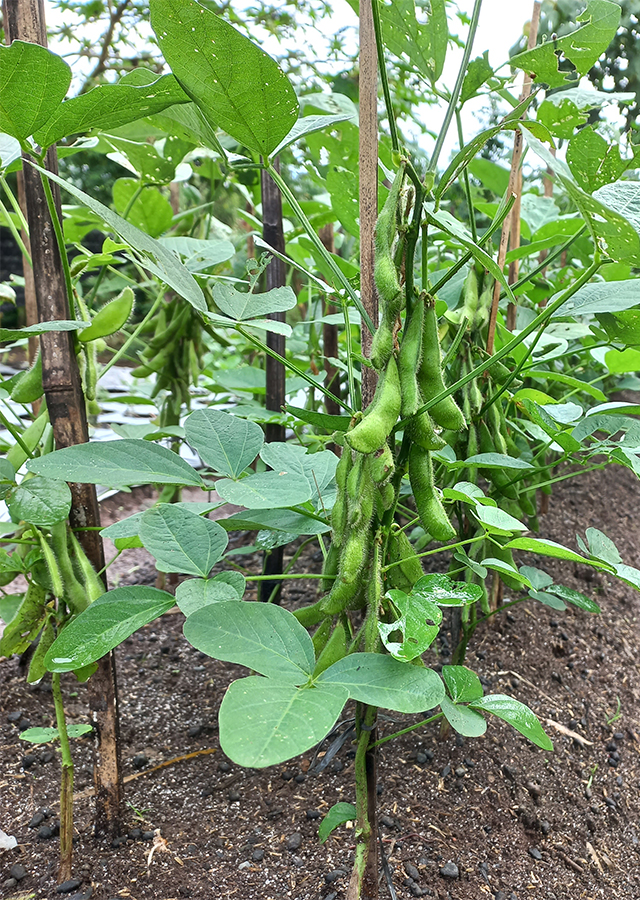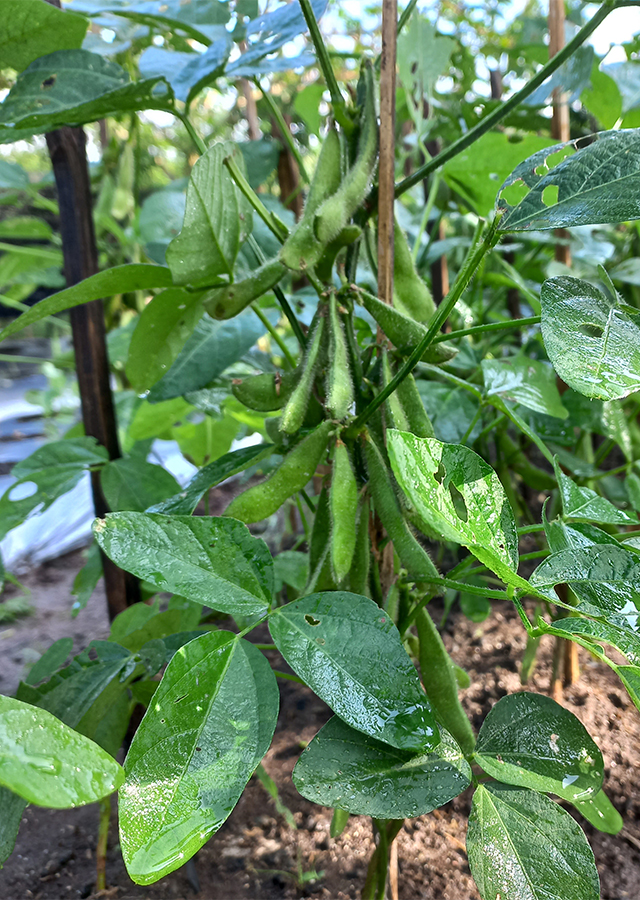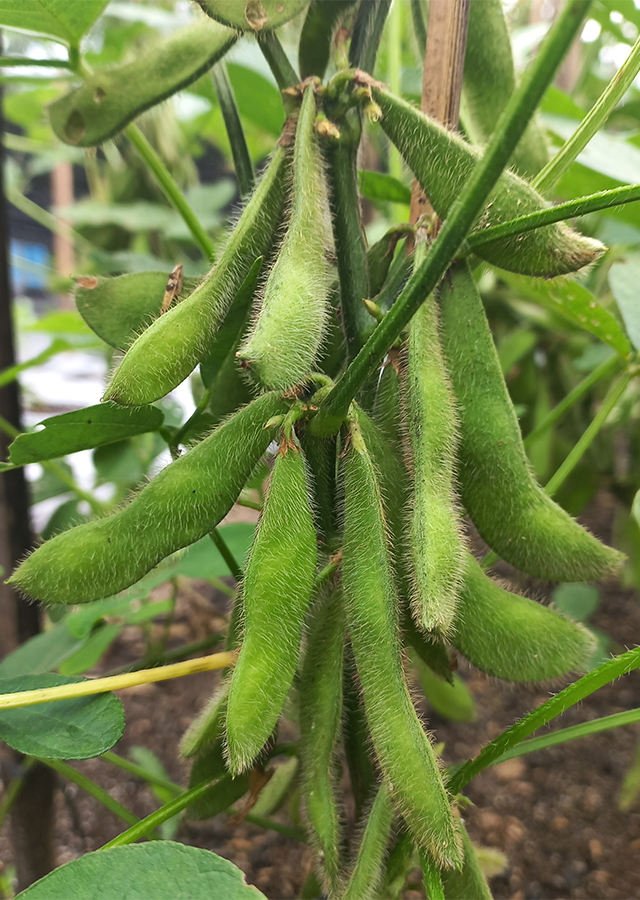Soybean
Glycine max (L.) Merr.
Fabaceae
Location in our garden
Vegetable



Synonym
Phaseolus max L.
Phaseolus sordidus Salisb.
Soja max (L.) Piper
Habitus
Herbaceous. Annual herbs, erect and sometimes creeping, grows 30 - 50 cm
Part Used
Young pods
Growing Requirements
Full Sunshine
Habitat
Terrestrial
Overview
The soybean is a species of legume native to East Asia, widely grown for its edible bean, which has numerous uses. Traditional unfermented food uses of soybeans include soy milk, from which tofu and tofu skin are made.
Vernacular Names
Soja (French/Spanish), Sojabohne (German), sojaboena (Sweden).
Agroecology
Soybean is suitable to grow in the plains of medium to high. Grows best in areas where annual daytime temperatures are in the range of 20 - 32 °C, but can tolerate 10 - 38 °C, and average annual rainfall is in the range of 600 - 1,500 mm, but tolerates 450 - 1,800 mm. Growth requires a sunny place, in fertile, well-drained soil with good drainage and neutral soil acidity (pH in the range of 5.5 - 6.5, but tolerates 4.3 - 8.4).
Morphology
- Roots - taproot, which branch to form secondary roots.
- Stems - branched, brown or gray, pubescent.
- Leaves - a compound consisting of three leaflets (trifoliolate), where the first leaf that emerges from the upper book of the cotyledon is a single leaf that is opposite and the leaf that forms after it is a trifoliolate leaf. Generally light green or yellowish green. Leaf shape ovate-deltoid.
- Flowers - has stamens and pistils in one flower. Shaped like a butterfly, white or purple. The number of flowers in each leaf axil varies between 2-25 flowers.
- Fruits - pods, slightly flattened, light green to dark green, grey, hairy.
- Seeds - larger in size than ordinary soybeans, has a sweeter taste, a stronger nutty aroma, a softer texture, the number of seeds per pod is 2-4, the shape of the seeds is round to ovoid, green to yellow in color.
Cultivation
Propagated by seeds - the spacing used is 20 - 40 cm or 30 x 20 cm, planted by inserted 2 seeds in to planting hole.
Chemical Constituents
Amino acids (glutamic acid, aspartic acid, argenine, isoleucine, phenylalanine), phytic acid, linolic fatty acids, linoleic acid, phospholipids, lecithin, isoflavone compounds (genistin, daidzein, genistein, and daidsin).
Traditional Medicinal Uses
- Overcoming lactose intolerance.
- Preventing arteriosclerosis to stroke.
- Preventing and treating heart disease, diabetes mellitus, migraines, anemia, premature aging.
- Lowering cholesterol, maintaining blood pressure.
- Reducing disorders during menopause and the risk of osteoporosis.
- Improving lung function, lungs in patients with asthma.
- Healthy snacks for weight loss and drinks for people with autism.
- Has activity as an antioxidant, anticancer, anti-inflammatory, antitumor.
Part Used
Reference Sources
- Royal Botanic Gardens. Plants of the World Online: Glycine max (L.) Merr. https://powo.science.kew.org/taxon/60450240-2. 17-03-22.
- Tropical Plants Database, Ken Fern. 2021. Glycine max. http://tropical.theferns.info/viewtropical.php?id=Glycine%20max. 17-03-22.
- Healthbenefitstimes. 2021. Health benefits of Edamame. https://www.healthbenefitstimes.com/edamame/. 17-03-22.

